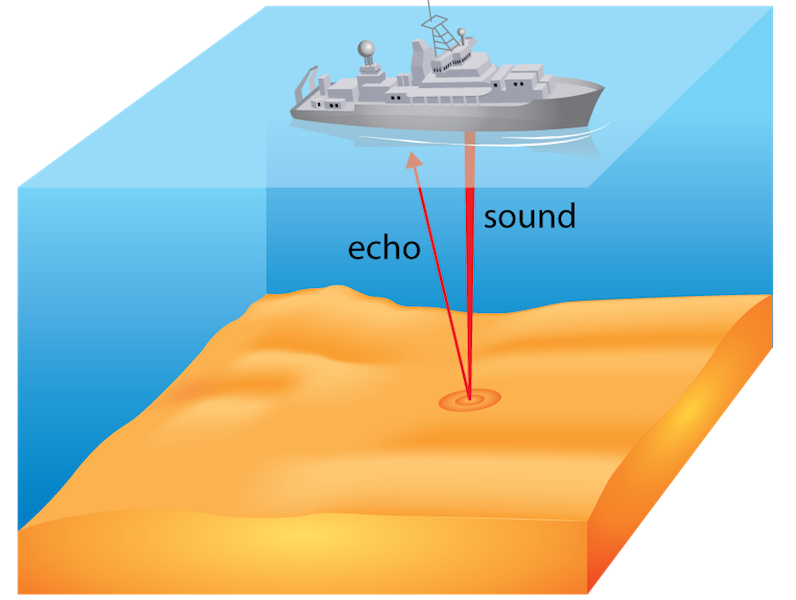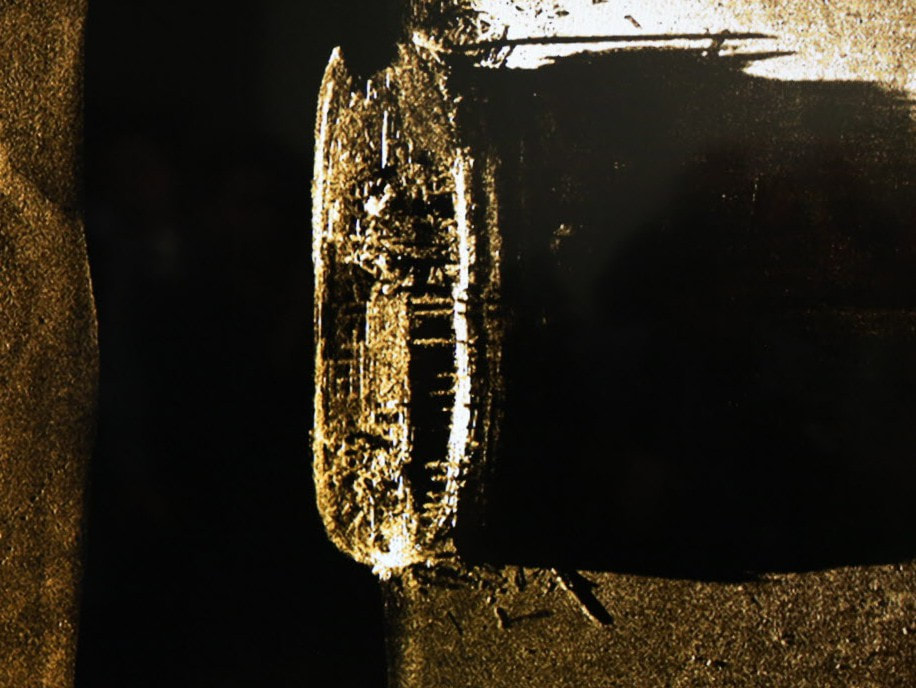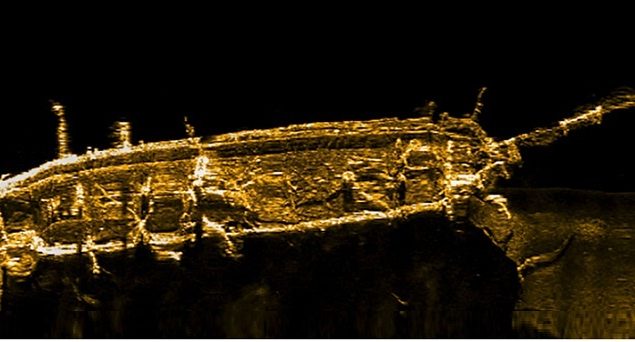|
Robotics >>
|
5.4 - Sound Waves
Objectives:
- To understand that sound travels much faster in water than it does in air.
- To understand how sound waves can be used to measure the depth of the ocean and so map its bathymetry.
- To know that sound waves can be used for communication between the surface and instruments below.
One of the biggest problems with underwater observations is that electromagnetic waves do not penetrate very far into water. Visible light can travel to a maximum depth of about 1000 m, in practice there is little appreciable light below 200 m. It is interesting to note that red light cannot penetrate as far as blue light, so affecting the perceived colours of underwater fish and corals. Some low frequency radio waves can go up to 20 m, but microwaves (used by wifi and phones) cannot get through more than a couple of centimetres at best.
This makes communication underwater using normal atmospheric techniques such as radio or microwaves essentially useless. However, sound waves travel far faster and far further in water than they do in air. So, for decades sound pulses have been used, with the earliest being the well-known SONAR used by submarines. Ultrasound, which operates at frequencies above the human range of hearing, is commonly used to measure the depth of the ocean. A sound pulse is sent downwards from the transducer (hydrophone) and the time recorded when the echo is detected. By using some simple physics, the depth is determined. The speed of sound in water is about \(1500\,\text{m/s}\).
This makes communication underwater using normal atmospheric techniques such as radio or microwaves essentially useless. However, sound waves travel far faster and far further in water than they do in air. So, for decades sound pulses have been used, with the earliest being the well-known SONAR used by submarines. Ultrasound, which operates at frequencies above the human range of hearing, is commonly used to measure the depth of the ocean. A sound pulse is sent downwards from the transducer (hydrophone) and the time recorded when the echo is detected. By using some simple physics, the depth is determined. The speed of sound in water is about \(1500\,\text{m/s}\).
Of course, dolphins and whales have been using this technique for thousands and thousands of years!
Scientists did not take too long to refine this using modern computer power to create images of the seafloor - this modern mapping of the seafloor is known as bathymetry. It can also be used to search for shipwrecks and lost aeroplanes (MH370....?) The images below are acoustic images of HMS Terror and HMS Erebus built by using sound waves from hydrophones towed by ships.
Scientists did not take too long to refine this using modern computer power to create images of the seafloor - this modern mapping of the seafloor is known as bathymetry. It can also be used to search for shipwrecks and lost aeroplanes (MH370....?) The images below are acoustic images of HMS Terror and HMS Erebus built by using sound waves from hydrophones towed by ships.
BBC News - Hunting for the Endurance 22 April 2020
Robotics >>


